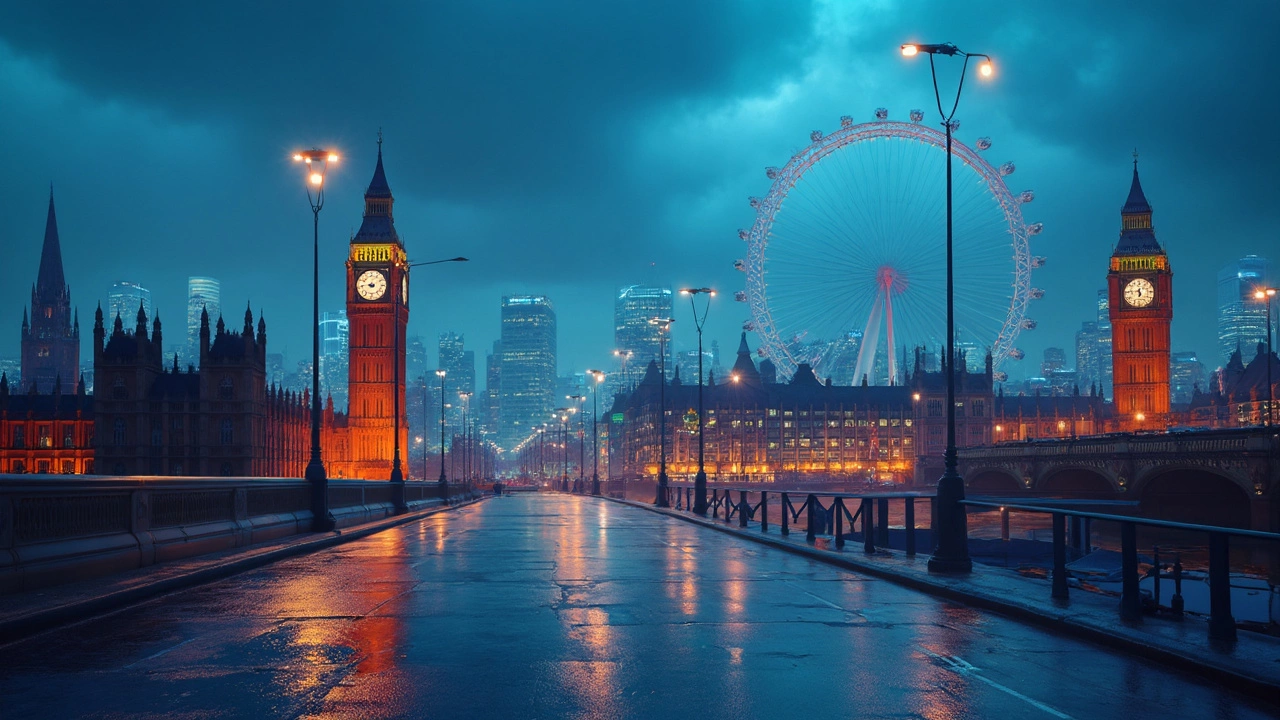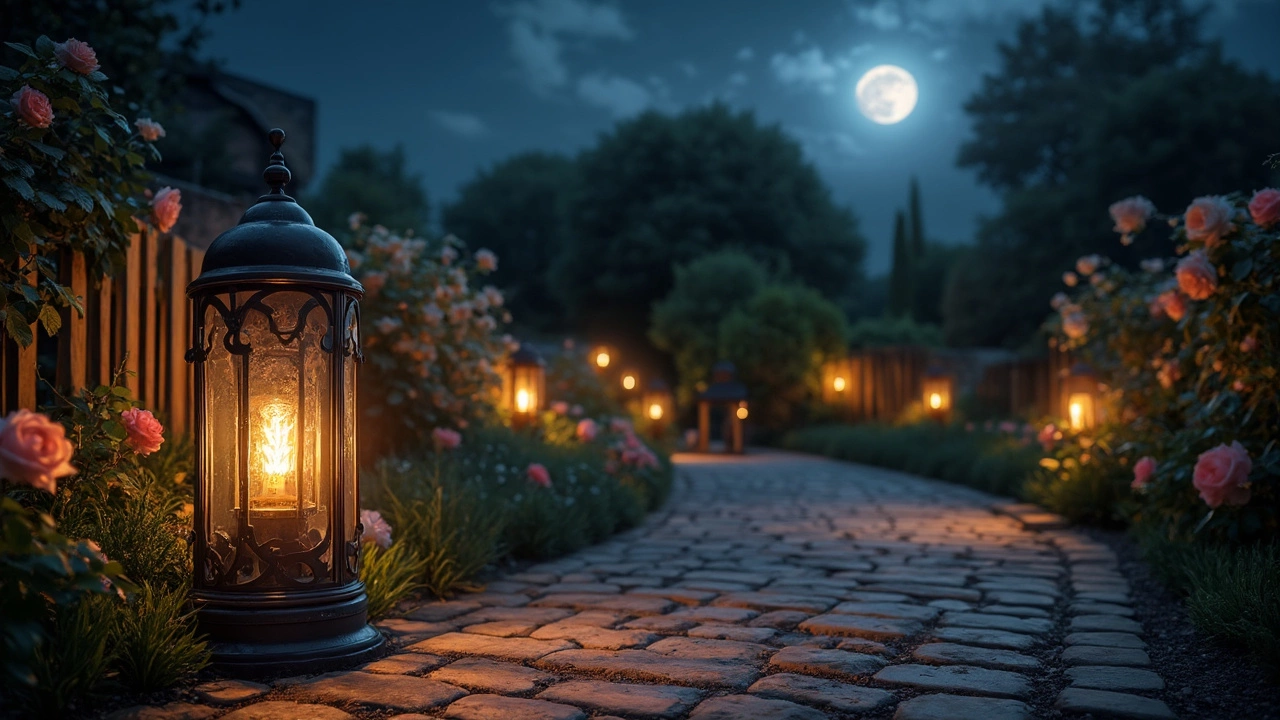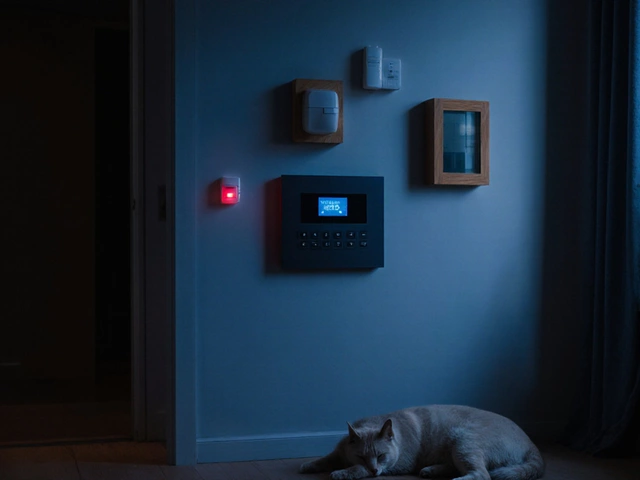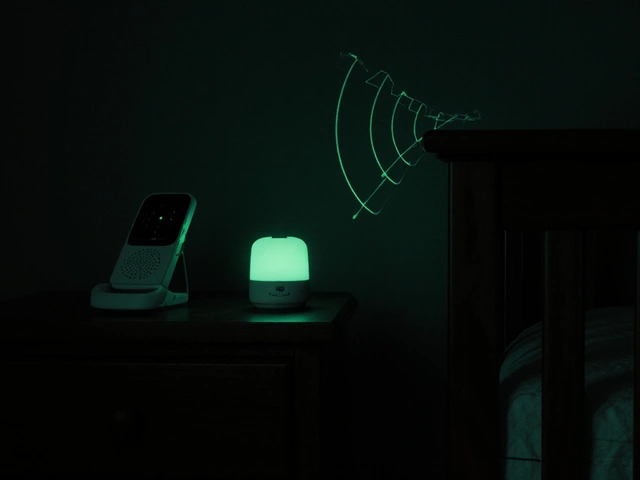If you're setting up outdoor security lights, you’ve probably considered using LEDs because they’re energy-efficient. But not all LEDs are the same, and color plays a key role in how long they last. So, what color LED lasts the longest? Turns out, it's not just about aesthetics; there's science behind it.
LEDs work by passing electricity through semiconductor materials, which emit light with surprisingly little energy. However, the color (or wavelength) of that light can affect how long your LED will shine bright. Let's break it down.
Blue and green LEDs typically have the longest lifespans. This is mostly due to the materials used in their production and their efficiency in heat dissipation—a major factor in lifeboosters. In stark contrast, you'll often find that red LEDs burn out faster. If you're wondering why this matters, think about the long winter nights when you need your security lights most.
- LED Longevity Basics
- Color Influence on Lifespan
- Why Blue and Green Win the Race
- Maximizing Your LED Lifespan
- Choosing the Right Color for Outdoor Security
- LEDs vs. Traditional Bulbs: A Quick Comparison
LED Longevity Basics
Ever wondered why LEDs outshine traditional bulbs when it comes to lifespan? The secret is in how they work. Unlike incandescent bulbs that burn out by overheating a filament, LEDs use a process called electroluminescence. This is where electricity passes through a semiconductor, lighting up without the heat-burnout issue.
When discussing LED lifespan, it’s important to note that these lights don’t just die suddenly. Instead, they fade over time, with their lifespan often defined by reaching 70% of their original brightness. This drop-off usually happens over tens of thousands of hours—way longer than any old-school bulb could manage.
Factors Influencing LED Lifespan
LEDs last longer, but they're not invincible. Their longevity can be affected by:
- Heat: Excess heat can degrade LED components, so proper heat management is crucial.
- Operating temperature: Extreme cold or heat can impact LED performance and lifespan.
- Quality of materials: Higher-quality materials often mean a longer-lasting light.
Interestingly, while LEDs are touted as longer-lasting, the LED color can influence how long you'll have that light up. This is all due to how different wavelengths of light interact with the LED's material makeup.
Comparing LED Lifespan with Traditional Bulbs
To put things in perspective, here's a quick comparison:
| Type of Bulb | Average Lifespan (hours) |
|---|---|
| Incandescent | 750-2,000 |
| CFL | 8,000-10,000 |
| LED | 15,000-50,000+ |
See the jump? That's why choosing the right LED color for your outdoor security lights is crucial—not only does it dictate light quality, but also how long those lights keep your home safe. More on how color affects longevity in the next sections!
Color Influence on Lifespan
Not all LEDs are created equal, and when it comes to lifespan, color is more than just a hue—it's a crucial factor. The unique characteristics of each LED color determine how efficiently it operates and how long it endures.
Blue and green LEDs reign supreme in terms of longevity. That's because they use materials that are excellent at converting electricity to light while minimizing heat. Heat is the enemy of electronic components, so by running cooler, these LEDs tend to last a lot longer.
On the flip side, red LEDs typically have shorter lifespans. This is due in part to the way they are constructed. Red LEDs use different semiconductor materials that, while efficient for brightness, aren't as effective at managing heat.
Why It Matters for Outdoor Security
When you’re picking outdoor security lights, choosing the right LED color could mean fewer bulb replacements and lower maintenance costs. Green and blue LEDs not only last longer but are also better suited for year-round use in various weather conditions. They won't flicker out when you need them most.
Another interesting aspect is the energy consumption aspect. Generally, the longer-lasting LEDs, like green and blue, are more energy-efficient, offering you better performance with less power usage. That's a win-win for you and your electricity bill.
How to Choose the Right Color
- If you’re focused on longevity and efficiency, go for blue or green LEDs.
- Consider your environment; blue light may appear brighter and is often favored for high-security areas.
- Think about local wildlife—some colors might be more disruptive depending on their visibility spectrum.
Ultimately, the best choice depends on your specific needs, but understanding the influence of color on LED lifespan gives you a head start in making an informed decision.
Why Blue and Green Win the Race
When it comes to outdoor security lights, choosing the right color can make a difference in both performance and longevity. Among the rainbow of LED options, blue and green LEDs often come out on top for how long they keep on shining.
Material Matters
The materials used in blue and green LEDs contribute significantly to their extended lifespan. They are made with nitrides like gallium nitride (GaN), which are exceptionally stable under loads of electricity. This stability means they generate less heat, and less heat means they last longer.Efficiency In Action
Not only do these LEDs handle heat better, but they also convert electrical energy into light more efficiently. This high efficiency is key for outdoor security lights that need to last overnight or through long winter evenings without losing brightness.In fact, studies show that blue and green LEDs can easily surpass 50,000 hours of operation. To put this into perspective, even if you kept your outdoor security lights on for 12 hours every night, they’d likely last over 11 years.
Real-Life Benefits
So, why does this matter for you? Simple. Opting for blue or green means you're not swapping out bulbs or fixtures as often. That’s less hassle and more peace of mind knowing your security lighting is dependable. Plus, it’s a choice that's kinder to the environment since it means less waste from burnt-out bulbs.A Quick Comparison
Here's a quick look at LED colors and their estimated average lifespan:| LED Color | Average Lifespan (Hours) |
|---|---|
| Blue | 50,000+ |
| Green | 50,000+ |
| Red | 20,000 - 30,000 |
Choosing blue and green isn't just about the science behind the longevity. It's about making practical decisions for your outdoor security lights. Next, we'll look at how you can make these colors work best for your setup.

Maximizing Your LED Lifespan
Got your outdoor security lights up and running with those efficient LEDs? Great choice! Now, let’s make sure they last as long as possible. It's not just about installation; there's a bit more to keeping them glowing brightly for years.
Choose the Right Environment
You may not think about it, but the environment plays a big role in how long your LEDs last. Make sure your lights are placed in areas where they're not exposed to severe weather. While LEDs are built tough, exposure to moisture or extreme heat can shorten their life. Consider using shades or covers to protect them.
Manage the Heat
LED lifespan is heavily influenced by heat. Keep them cool! Use lights with good heat management. Look for aluminum heatsinks, which help dissipate heat effectively. Also, try not to install them in enclosures that trap heat.
Use Quality Drivers
LEDs run on a driver, sort of like a car engine. Use quality drivers to avoid flickering and energy surges, both of which could reduce your LED's life. Make sure your drivers are compatible and efficient.
Don’t Overdrive the LEDs
Overdriving is like pushing your LEDs with more power than they need. This drastically reduces their lifespan. Always check the specifications and use the recommended power settings. It's a common mistake, but easy to avoid.
Regular Maintenance
Regular checks can go a long way. Make sure your lights are clean and free of dust buildup. Dust can act as insulation and trap heat, contributing to a shorter lifespan. Wipe them down every few months. Easy peasy, but it works!
Smart Use
Automate your outdoor security lights with sensors or timers. They only turn on when they're needed, saving energy and extending life. It's cost-effective and maximizes efficiency.
Choosing the Right Color for Outdoor Security
Picking the right color for your outdoor security lights is more than just a style choice; it’s about practicality and efficiency. The color of your LEDs really does matter when it comes to lifespan and effectiveness at night. So, what should you consider?
The Benefits of Blue and Green
As mentioned earlier, blue and green LED lights generally top the charts for longevity. Why? It's all down to the materials used. Blue and green LEDs are crafted using certain materials that not only support longer use but also dispel excess heat more easily, kind of like a fan cooling off your computer.
Additionally, these colors scatter less in the air, meaning they can appear brighter to the human eye without having to crank up the brightness. Perfect for security lights where visibility is key.
Red and Yellow LEDs
On the other hand, red and yellow LEDs, while vibrant, tend to have a shorter lifespan. Primarily, this is because they struggle more with heat management, leading them to burn out faster. This isn't ideal if you're hoping to 'set and forget' your outdoor lighting for years to come.
Which Color Fits Your Needs?
Ultimately, a mix of functional and aesthetic considerations should guide you. If you want lights to last and provide reliable security coverage, you're looking at blue or green LEDs as solid bets. But remember, the type of light can affect wildlife—blue lights may attract certain bugs or disrupt animal behavior more than warmer colors. It's a balance between nature-friendliness and security needs.
If you have specific lighting goals, such as lighting a walkway or focusing on a specific area, you might want to mix and match different colors for the best effect.
Here's a quick comparison to help:
| LED Color | Average Lifespan (Hours) | Applications |
|---|---|---|
| Blue/Green | 35,000 - 50,000 | Security, extended use |
| Red/Yellow | 20,000 - 35,000 | Accent lighting, occasional use |
Consider where they’ll be used, what mood you’re setting, and how much maintenance you're willing to endure. Whatever color you choose, make sure it's bright enough to make anyone sneaking around your yard think twice. Stay safe and keep the lights on!
LEDs vs. Traditional Bulbs: A Quick Comparison
Choosing between LEDs and traditional bulbs for outdoor security lights can feel like a daunting decision. Let's break it down with some clear facts to see how they stack up against each other.
Energy Efficiency
When it comes to energy consumption, LEDs are clear winners. A standard LED bulb can use about 75% less energy than an incandescent bulb. This big difference can significantly lower your electricity bill, especially if you keep your security lights on throughout the night.
Lifespan
One of the major reasons folks are switching to LEDs is their impressive lifespan. On average, an LED can last around 25,000 to 50,000 hours. Compare that to a traditional incandescent bulb, which might give you only 1,000 hours of light. This means fewer trips up the ladder to change out your security lights.
Durability
LEDs also shine in terms of durability. They are made with solid-state components that can withstand vibrations and bumps, unlike traditional bulbs that have filaments that can break easily. This robustness makes LEDs a great fit for outdoor use, where conditions can get harsh.
Initial Cost vs. Long-term Savings
The upfront cost of LEDs can be higher than traditional bulbs, but over time, their energy savings and long lifespan offset the initial investment. It's like paying more for a good pair of shoes that won’t wear out after a few walks.
| Bulb Type | Average Lifespan | Energy Use |
|---|---|---|
| LED | 25,000 to 50,000 hours | 10 Watts |
| Incandescent | 1,000 hours | 60 Watts |
| Halogen | 2,000 hours | 43 Watts |
In sum, while traditional bulbs have been around for ages, the modern efficiency and longevity of LEDs make them a smart choice for security lighting. You'll save money and effort over time, while also doing a little good for the environment!




